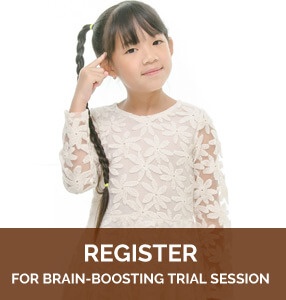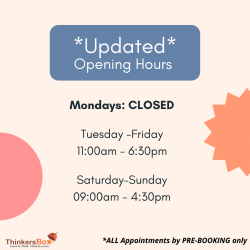Posted By :
ThinkersBox12-01-2013
0Comment
It is the start of a brand new year with brand new goals and expectations. Some of us parents may have a target list of sorts to keep check on our children’s learning progress. Maybe your checklist for your child is something like this:
- Able to read
- Able to count until 100
- Able to add and subtract
- Able to write
- Able to spell
The list goes on. While ensuring that all these skills are in place is important, the best thing you could do for your child in this period of preparation is to cultivate a love for learning.
It is one thing for your child to be able to read, write, spell, and listen when the situation calls for it. It is, on the other hand, an entirely different attitude, for your child to want to learn. To want to ask questions, want to read, want to do his/her homework, want to do more than what is required.
There are many factors affecting the attitude towards learning. One of which is motivation.
According to Chan and Ahern (cited in Paras & Bizzocchi, 2005), “When people are intrinsically motivated to learn, they not only learn more, they also have a more positive experience.” The ARCS model, developed by John M. Keller identifies 4 essential components of motivation. *Coloured text are added points
[A]ttention strategies for arousing and sustaining curiosity and interest
- Leaners are more motivated when materials taught are intriguing and when it sparks their curiosity
- Design interesting activities or conduct simple science experiments together
- Here’s a link to an interesting list of fun science experiments for children (http://www.sciencekids.co.nz/experiments.html)
[R]elevance strategies that link learners’ needs, interests and motives
- Learners are more motivated when goals of learning are clearly defined and aligned with learners’ interests
- Find out what are your child’s interest and design a lesson revolving his/her interest (eg. If your child enjoys drawing, design a lesson that requires your child to draw new vocabulary or drawing pictorial words to learn spelling)
(Picture Credit: http://media.wnyc.org/media/photologue/photos/cache/07_words_into_pictures_storyslide_image.jpg)
- Before starting any activity with your child, let the child know the objectives of doing the activity (to expand vocabulary list, to learn spelling of new words etc.)
[C]onfidence strategies that help students develop a positive expectation for successful achievement
- Learners are motivated when challenge is balanced in such a way that the learning process is neither too easy as to bore the learner, or too difficult such that success seems impossible
- Set age appropriate activities for your child, even in terms of selecting assessment books and other enriching materials
- When a child deems a question as difficult, yet is able to complete it, he/she gains learning success which increases his/her self-efficacy
- With increased self-efficacy, the child would have the confidence to attempt other difficult questions
- Zimmerman (2000) stated that, “self-efficacy has emerged as highly effective predictor of students’ motivation and learning.”
[S]atisfaction strategies that provide extrinsic and intrinsic reinforcement for effort
- Learners are more motivated when there are rewards (reinforcement) for correctly executed actions
- There are many types of reinforcement (social: praising, affirming/tangible: sweets, snacks)
- The following website provides a comprehensive guide to choosing and using reinforcements (http://www.cehd.umn.edu/ceed/publications/tipsheets/preschoolbehavior/posrein.pdf)
Preparation for primary school doesn’t have to be bothersome and tiring for both you and your child. It is a win-win situation when you enjoy designing creative (and fun!) activities and when your child enjoys doing them!
References
Paras, B. & Bizzocchi, J. (2005). Game, Motivation, and Effective Learning: An Integrated Model for Educational Game Design. 2005 Conference: Changing Views–Worlds in Play. Retrieved from http://www.summit.sfu.ca
Zimmerman, B. J. (2000). Self-Efficacy: An Essential Motive to Learn. Contemporary Educational Psychology 25, 82-91. Retrieved from http://www.unco.edu/cebs/psychology/kevinpugh/motivation_project/resources/zimmerman00.pdf









